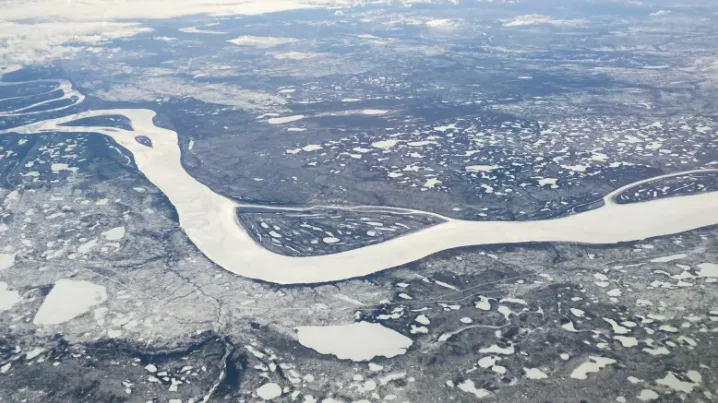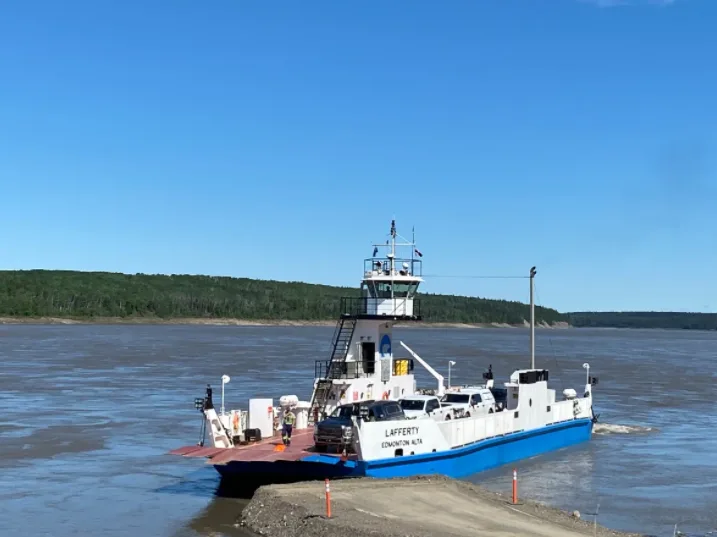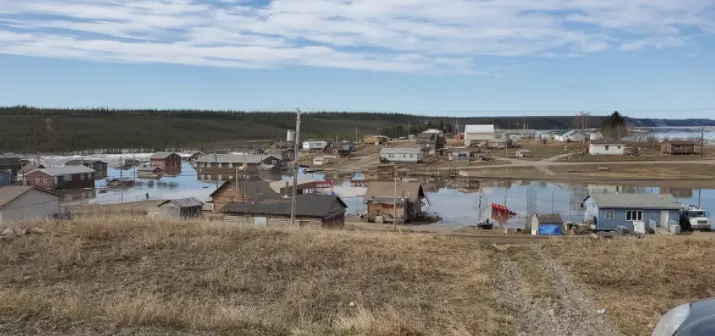
After catastrophic 2021 flood, N.W.T. communities prepare for spring breakup
The Dehcho (Mackenzie River) is already moving near Fort Providence, and in the communities of Fort Simpson and Fort Good Hope where the river is still frozen, community members are not waiting for disaster to strike — many have lifted their homes and have begun to move valuables to high ground.
MUST SEE: Hint of summer or winter flashback? Canada's April 2022 forecast
Floods in May last year were "the scale of something that just had never been anticipated," said Fort Simpson Mayor Sean Whelly.
Hundreds of community members displaced from their homes sheltered in emergency tents. The community was "caught off guard" — getting help from the outside was tough and the Canadian Rangers deployed were affected by the flood themselves.
"It was a terrible thing to go through. I think we'll be much better prepared this year," Whelly said.
This March, the community activated its emergency management organization and met with the territorial environment department to set up a tent city and a temporary health centre well before break up.
Last year, getting supplies and people out of the community was a logistical issue.
This year, the transportation department will be ready to push the ferry into the Liard River "the minute there's open water," Whelly said.

The Dehcho usually breaks around the first week of May and on the year-anniversary of the flood, "people are a little bit leery of what might occur," said Whelly.
Whelly said the mountain snow pack is thick, and some ice cores taken around Jean Marie River are six feet long.
Whelly said last year COVID-19 deterred many people from evacuating and that this year people should decide early if they plan to stay, or to leave if necessary.
Some people may decide to stay and watch their property, he said.
The community is shuttling high-value items like snowmobiles and all-terrain vehicles to high ground. The town is also paying for pets to be safely kenneled because it's one of the reasons residents could not leave last year, Whelly said.
"It's unfortunate that [the cost] kind of falls on the community," said Whelly. "I wish that that type of spending could be subsidized by the territorial government as it's not recoverable."
WATCH: INCREDIBLE POWER OF ICE GRINDING DOWN THE MACKENZIE RIVER AMAZES LOCALS
Residents are installing backflow valves and plugs for their basements to avoid sewer backups, and laying plans to let fuel tanks run low. Whelly said the community wants companies to remove fuel from tanks and credit customers the difference, and to remove diesel from flood-prone areas to avoid water contamination.
The power corporation has moved power lines off Mackenzie Drive, which is closest to the river, and established individual shutoffs on power poles so they can kill the power in flooded areas while keeping the rest of the grid live, said Whelly.
Some community members displaced by flooding last year are still not back in their homes, said Whelly.
Two replacement homes arrived in the community several days ago and they have been placed up on blocks to keep them above the flood line.
People who could not raise their homes have moved off the flood-prone areas, he said.

The community has been through a pandemic and a year of flood recovery, and Whelly said individuals and businesses have not recovered from their financial losses.
"Mental health wise, I think people have had to cope with quite a lot with the flood," he said.
"Everyone's trying to make it so that we're not going to suffer as much in the event of high water flooding," he said.
MONITORING ICE, RAISING HOMES IN FORT GOOD HOPE
Arthur Tobac heads up the K'asho Got'ine Housing Society in Fort Good Hope, where in May last year flood waters damaged 14 homes and sent the community into a state of emergency.
Over the last year, the community has restored nine homes, jacked them up above last year's water line, and people in the community and with cabins along the river are moving their goods to higher ground.
The territory's municipal affairs department and the federal government helped pay for repairs in the community.
"We've got just about all of them back in their homes," said Tobac.
Many homes have been raised on blocking — some as high as four feet — to protect against severe water damage.
Those modifications involved adjusting stairs, raising sewer drainage lines, altering fuel lines and raising tanks, which "have to be able to detach quickly ... in case the water levels come up."
Tobac said people in the community will be watching water levels and ice movement.
"We're always trying to monitor these things before the spring just to see if there's going to be a problem," he said.
This story, written by Avery Zingel, was originally published by CBC News on April 1, 2022.










